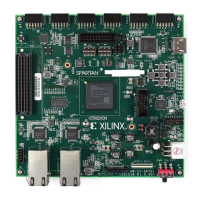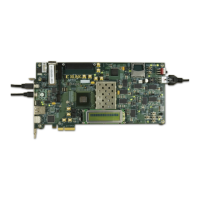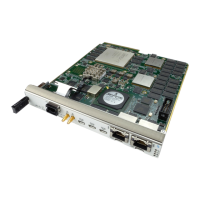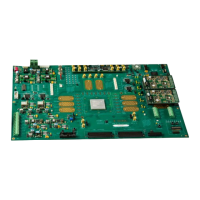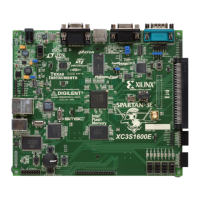78 www.xilinx.com 7 Series FPGAs GTP Transceivers User Guide
UG482 (v1.9) December 19, 2016
Chapter 3: Transmitter
Table 3-5 defines the FPGA TX interface attributes.
Using TXOUTCLK to Drive the TX Interface
Depending on the TXUSRCLK and TXUSRCLK2 frequencies, there are different ways FPGA
clock resources can be used to drive the parallel clock for the TX interface. Figure 3-2 through
Figure 3-5 show different ways FPGA clock resources can be used to drive the parallel clocks for
the TX interface. In these examples, the TXOUTCLK is derived from the MGTREFCLK0[P/N] or
MGTREFCLK1[P/N] and the TXOUTCLKSEL = 011 to select the TXPLLREFCLK_DIV1 path as
indicated in Figure 3-20, page 108.
• Depending on the input reference clock frequency and the required line rate, an MMCM and
the appropriate TXOUTCLKSEL port setting is required. The CORE Generator™ tool creates
a sample design based on different design requirements for most cases.
• In use models where TX buffer is bypassed, there are additional restrictions on the clocking
resources. Refer to TX Pattern Generator, page 103 for more information.
Table 3-4: FPGA TX Interface Ports
Port Dir Clock Domain Description
TXCHARDISPMODE[3:0] In TXUSRCLK2 When 8B/10B encoding is disabled,
TXCHARDISPMODE is used to extend the
data bus for 20- and 40-bit TX interfaces.
TXCHARDISPVAL[3:0] In TXUSRCLK2 When 8B/10B encoding is disabled,
TXCHARDISPVAL is used to extend the
data bus for 20- and 40-bit TX interfaces.
TXDATA[31:0] In TXUSRCLK2 The bus for transmitting data. The width of
this port depends on TX_DATA_WIDTH:
TX_DATA_WIDTH = 16, 20:
TXDATA[15:0] = 16 bits wide
TX_DATA_WIDTH = 32, 40:
TXDATA[31:0] = 32 bits wide
When a 20-bit or 40-bit bus is required, the
TXCHARDISPVAL and
TXCHARDISPMODE ports from the 8B/
10B encoder is concatenated with the
TXDATA port. See Table 3-2, page 77.
TXUSRCLK In Clock This port is used to provide a clock for the
internal TX PCS datapath.
TXUSRCLK2 In Clock This port is used to synchronize the FPGA
logic with the TX interface. This clock must
be positive-edge aligned to TXUSRCLK
when TXUSRCLK is provided by the user.
Table 3-5: FPGA TX Interface Attributes
Attribute Type Description
TX_DATA_WIDTH Integer Sets the bit width of the TXDATA port. When 8B/10B
encoding is enabled, TX_DATA_WIDTH must be set to 20
or 40. Valid settings are 16, 20, 32, and 40. See Interface
Width Configuration, page 76 for more information.
